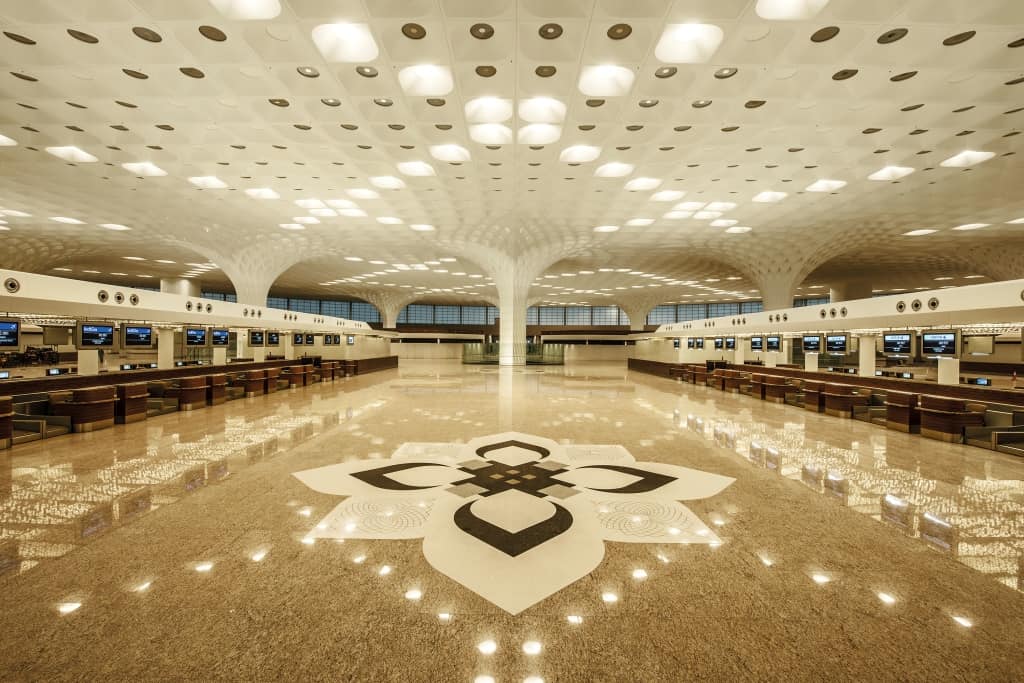Chhatrapati Shivaji Maharaj International Airport (CSMIA) is the busiest airports in India, after Delhi. But unlike the Delhi airport CSMIA is located in the middle of a densely populated, congested area.
Therefore balancing biodiversity and wildlife alongside the airport infrastructure is an unusual challenge for the airport authorities. All living things, including plants, animals, and humans are part of the biodiversity of the area.
CSMIA in a press release states “it has undertaken numerous measures towards biodiversity management and wildlife conservation at the airport and its vicinity. The principles of biodiversity and wildlife management have been integrated right from the design stage of the facilities at the airport and embedded into its daily operations. The airport continuously monitors and maps areas of wildlife activity in order to undertake preventive measures to minimise any impact on wildlife.”
However environmentalists are not convinced. Conservation Action Trust (CAT), a city-based non-profit environment group’s Executive Trustee, Debi Goenka says CSMIA is not doing anything to preserve the biodiversity of the area and in fact are doing everything to curtail it. While speaking to Citizen Matters, Goenka said, “they are destroying it and removing biodiversity and wildlife from the area.”
Read more: Here’s how we can mitigate the ecological impact of Navi Mumbai airport
Birds and airports
Birds are the primary source of concern and airports worldwide adopt measures to prevent incidents such as bird and animal strikes. Typical measures including maintaining grass, netting of drains to curtail food and water source to birds, controlling waste disposal, spraying pesticides amongst others are general guidelines followed by most airports to reduce the presence of birds near the runways.
In a press release CSMIA emphasised that they are “adopting the ‘Grass Policy’ initiative to curtail bird and other wildlife activities near its runways.”
Additionally, CSMIA has implemented methods such as deployment of bird scarers, six shot scaring guns and patrolling of wildlife vehicles with a mounted scarecrow device to prevent the wildlife habitat implementation at the airport and bird counting twice in a day by wildlife officials.
Stalin Dayanand, environmentalist and director of NGO Vanashakti points out that CSMIA has two dumping yards in its flying funnel Deonar and Kanjurmarg and there are hundreds of birds which come in the flying path, they have not done anything about that. “They fly over it and have been doing it for ages. They have never taken any initiatives for this.”

Because the airport is surrounded by human population CSMIA says, “they are extending efforts to educate the surrounding public on supporting its measures to prevent bird strikes; meat/chicken shop owners, fish vendors and slaughter-house owners for proper disposal of waste in coordination with MCGM officials”.
According to CSMIA, they are consistently carrying out the pruning of trees from adjacent areas and on approach and takeoff path of runways in coordination with MCGM tree authority to reduce the presence of birds in the vicinity of the airport.
The airport has also introduced a new technological device from BirdGard India, known as the ‘Super Pro Amp’ installed near the runways that is operational 24/7 to disperse birds. Additionally, the airport has placed anti-perching spikes and Gel cups on all airside structures, such as signages, aerobridges, lights, amongst others and employs the use of laser torches at nighttime for bird control.
As per the policy, CSMIA says that they maintain the grass height up to 30 cm (termed as long grass) during the monsoon season and up to 20 cm (short grass) during the rest of the months.
Dayanand also agreed to the fact that the CSMIA cannot do much in the area. He said, “the area is so congested already and densely populated I don’t think there is much space left to do anything. The airport has been operational for decades.”
CSMIA has implemented numerous SOPs, guides and action plans in its efforts to minimize its impact on biodiversity and wildlife at the airport, including the implementation of the Biodiversity and Wildlife Management ISO 14001 to identify the risks related to wildlife strikes.
Mithi river and Mumbai airport
CSMIA is spread over 750 hectares (1,850 acres) and has three operating terminals and handles about 950 aircraft movements per day. It was opened in 1980 and was privatised in 2006. It was managed and modernised by a consortium led by the GVK group. In September 2020 Adani group bought 50.5% stake in Mumbai International Airport Ltd (MIAL) therefore controlling the CSMIA also. In 2019-20 Mumbai airport handled a combined traffic of 45.92 million passengers.
Stalin suggested that CSMIA should do something about the Mithi river which is very close to the airport.
Mithi river begins from a junction of Vihar and Powai lakes. It flows through SakiNaka, Kurla and Mahim industrial areas and finally meets the Arabian Sea at Mahim Creek.
Stalin suggested that CSMIA could have done something for the rejuvenation of the river and beautification of the area. “They could have made sewage plants and did something for beautification of the area. When you come out of the airport the river stinks so bad.”
“There is artificial biodiversity inside and outside the airport but that is for the aesthetic not for the environment. They have conveniently ignored the river.”
Pawan Sharma who is the founder of the animal welfare group RAWW (Resqink Association for Wildlife Welfare) is of the opinion that “The Mumbai Airport is undertaking green and ecological activities and initiatives for sure but they need to increase it more on a larger scale. It is very important for an institution like the airport to do much more so as to set a positive impact and an example for everyone locally and internationally.”
He added, “Mumbai is one of the most unique urban wildlife habitats which is facing tremendous threat of extinction which needs more local and international attention and action.”
Also read: